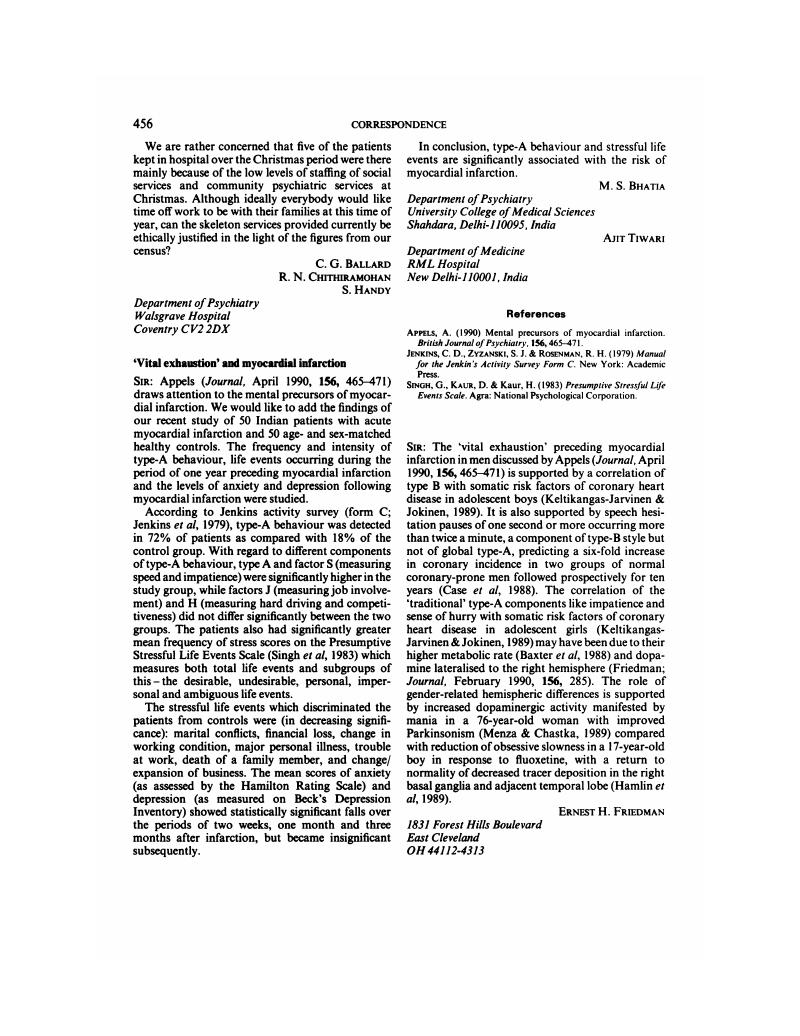No CrossRef data available.
Article contents
Abstract
An abstract is not available for this content so a preview has been provided. As you have access to this content, a full PDF is available via the ‘Save PDF’ action button.

- Type
- Correspondence
- Information
- Copyright
- Copyright © Royal College of Psychiatrists, 1990
References
Baxter, L. R., Schwartz, J. M., Mazziotta, J. C., et al (1988) Cerebral glucose rates in nondepressed patients with obsessive–compulsive disorder. American Journal of Psychiatry, 145, 1560–1563.Google ScholarPubMed
Case, R. B., Friedman, E. H. & Friedman, M. (1988) Type A behavior (letters and reply). American Heart Journal, 116, 1653–1657.CrossRefGoogle Scholar
Keltikangas-Jarvinen, L. & Jokinen, J. (1989) Type A behavior, coping mechanisms and emotions related to somatic risk factors of coronary heart disease in adolescents. Journal of Psychosomatic Research, 33, 17–27.CrossRefGoogle ScholarPubMed
Hamlin, C. L., Swayze, L. C. & Liebowitz, M. R. (1989) Striatal IMP-spect decrease in obsessive-compulsive disorder, normalized by pharmacotherapy. Neuropsychiatry, Neuropsychology and Behavioral Neurology.
2, 290–300.Google Scholar
Menza, M. A. & Chastka, E. (1989) Idiopathic Parkinson's disease and mania: the effect of mania on the movement disorder. Neuropsychiatry, Neuropsychology and Behavioral Neurology, 2, 301–305.Google Scholar



eLetters
No eLetters have been published for this article.